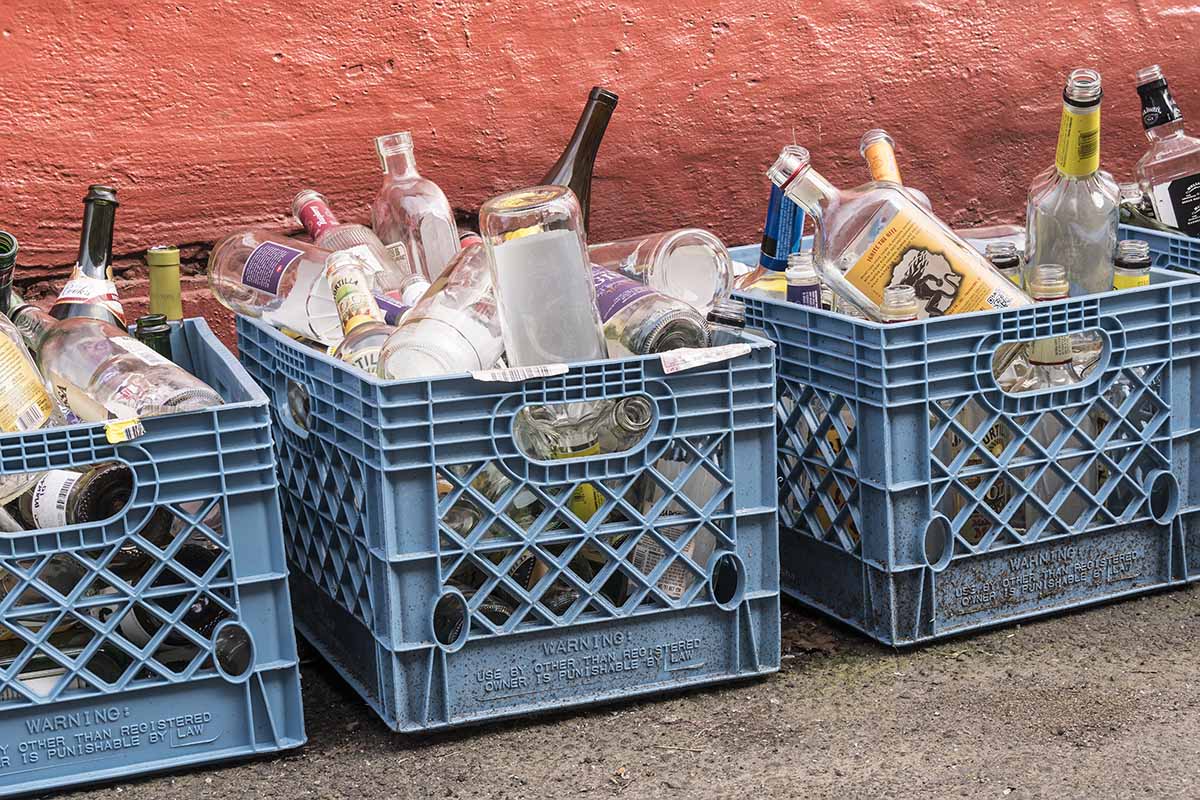
In the latest edition of the annual survey, 58% of respondents were from the public sector, 12% were glass manufacturers, and 10% were MRFs. | Michael Warwick/Shutterstock
The vast majority of residents expect to be able to recycle glass, and concern about glass recycling programs has fallen sharply, the Glass Recycling Coalition’s 2023 Glass Recycling Survey found.
The annual survey polls recycling coordinators, solid waste staff, MRF operators, glass processors, and brand and manufacturer representatives, asking about a variety of topics related to glass recycling.
More than 93% of the public-sector respondents to the latest survey said residents expect to have the option to recycle glass, up from the 90% recorded in 2020. That’s also in line with the increase the survey noted in respondents placing “resident satisfaction” as a top program priority.
In 2023, 62% of respondents said resident satisfaction was a top reason to keep glass in recycling, up from 55% in 2020. The other two top reasons were reducing contamination (50%) and meeting environmental/diversion/sustainability goals (47%).
Public sector respondents also expressed fewer concerns about glass recycling. About 37% said they had some concerns in 2023, down from 41% in 2020, 54% in 2018 and 63% in 2017.
The biggest concern was financial, the report noted: MRF tipping fees and transportation costs to a glass processor are more expensive than landfilling glass.
“The recycling industry as a whole has faced many challenges in the past five years, including disruptions in recycling markets and the COVID-19 pandemic,” the report noted, adding that the research “represents just a portion of the industry.”
“While the GRC would like to have been able to survey every community and recycling processor in the country, the results presented here represent a snapshot of the industry based on those who responded,” it added.
Of the 4,000 people the survey was sent to, 262 responded. That’s 50 more responses than the 2020 survey, the report stated. About 58% of the 2023 respondents were from the public sector, 12% were glass manufacturers, and 10% were MRFs. The number of MRFs who respond has fallen since 2018, when 82 responded, to 44 in 2020 and 41 in 2023.
Bob Hippert, sustainability strategy leader of manufacturing for O-I Glass and a member of GRC’s Leadership Committee, said in a press release that the 2023 survey “reflects what we hear from GRC members, communities and material management professionals – residents want to recycle glass.”
However, the survey also found that the top challenges were cost-effectiveness and lack of recycling options. Almost 70% of public-sector respondents made changes to their recycling programs based on current market conditions. Over half increased recycling education, and about one-quarter changed what they accepted.
About 41% of MRF respondents said they have additional glass cleaning equipment, up from 36% in 2020, and another 5% said they were considering adding some. Air separators and glass breakers are the two most common types of equipment.
Most MRFs said they send their glass to beneficiation facilities, and 56% of MRF
respondents said they have had a consistent outlet for glass over the past five years and another 10% have had an outlet for the past year. The remaining respondents said they haven’t been able to find a consistent market or any market at all. The number of respondents with consistent outlets dropped slightly from 2020.
Finally, nearly 87% of public-sector respondents and 83% of glass industry respondents expressed interest in grants.
Lydia Gibson, director of sustainability and strategic analysis at glass recycler Strategic Materials and member of GRC’s Leadership Committee and MRF Certification Committee, noted that “creating local circular economies where used glass can be economically collected, sorted, transported and then made into new products” is vital to overcoming those challenges.
“That takes investments of effort and funding from all players in the glass recycling chain including brands, manufacturers, legislators, communities, material processors and end markets,” Gibson added.